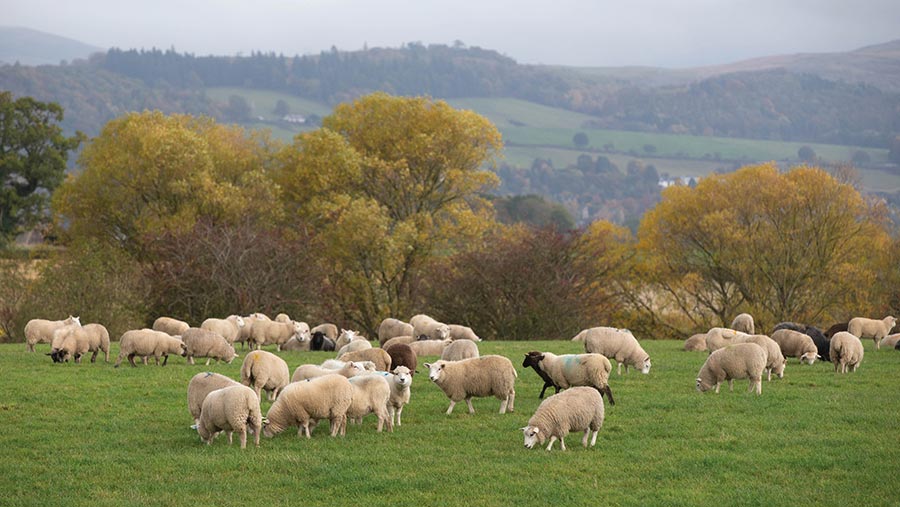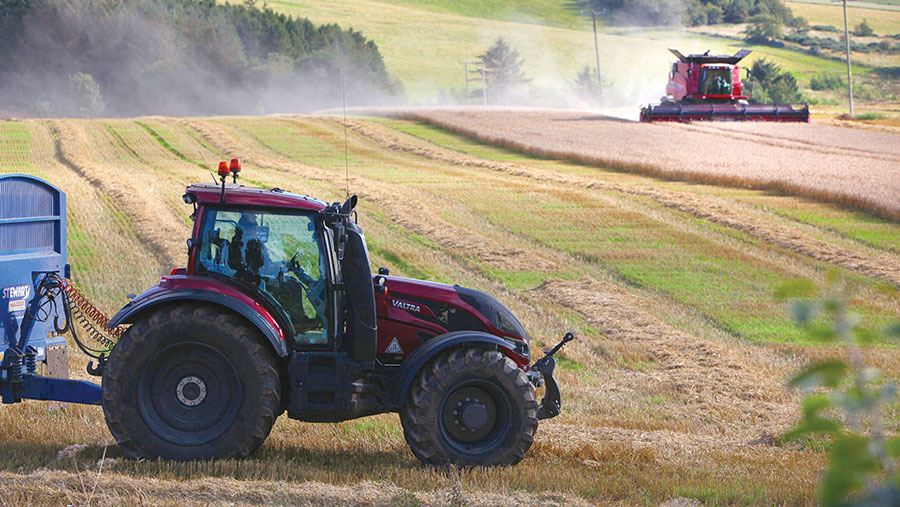How Scottish farmers can sell their secure tenancies
 © Tim Scrivener
© Tim Scrivener In-depth guidance has been released in Scotland for farmers who wish to sell their secure tenancies to their landlord or a new entrant.
The new legislation was introduced as part of the Land Reform (Scotland) Act 2016 in February 2021. It applies to tenancies under the Agricultural Holdings (Scotland) Act 1991, of which there are about 4,000.
The sale price will be determined by an independent valuer using a prescribed formula.
See also: How to transfer tenancies for succession in Scotland
It is hoped this method will encourage farmers looking to move on to relinquish their agreement, due to the financial incentive, thus providing more opportunities for new tenants.
Serving notice
A request to relinquish a tenancy prompts a sequence of time-limited procedures, a valuation process (the cost of which is to be covered by the tenant), and potential bills for professional advice.
Farmers are therefore advised to first consider whether this process is a better option for them than their existing rights to transfer tenancies by assignation and succession.
On making the decision to proceed, the tenant should have an informal discussion with the landlord to establish whether they want to buy the tenancy or are happy for it to be assigned elsewhere. This can help speed up the process and limit costs.
The tenant should serve a written notice of intention to relinquish to the landlord, which must contain the details and be formatted as specified in the Scottish Land Commission’s Guide to the Relinquishment and Assignation of 1991 Act Tenancies, issued by tenant farming commissioner (TFC) Bob McIntosh.
The tenant should provide as much relevant information as possible, including improvements made that may be eligible for compensation at waygo (the process of winding up a tenancy and confirming compensation due to the tenant). A copy of the notice must also be sent to the TFC.
On receipt of this notice, the landlord can issue a notice of declinature (turning down the opportunity to buy the tenancy) or a notice of acceptance (to buy the tenancy), or await the valuation before making a decision.
How the valuation works
Within 28 days of receiving the relinquishment notice, the commissioner will appoint a valuer from the recently announced independent panel of 29 to assess the compensation payable to the tenant.
If the tenant and landlord agree on a preferred valuer, they should notify the TFC immediately. Otherwise, the panel members will provide a fee plus expenses quote for the specific case. The commissioner will make the decision based on the quote and any relevant knowledge or experience.
The tenant is responsible for meeting the cost of the valuation.
Both the landlord and tenant can object to the valuer appointed. They must apply to the Land Court to appoint a valuer instead within 14 days of receiving notice of who the commissioner chose.
From the date of appointment, the valuer has eight weeks to set out their decision – and the reasoning behind it – and provide a dated copy to the tenant, landlord and commissioner.
Compensation payable by the landlord to the tenant will be calculated by:
- Deducting the value of the land if sold with a sitting tenant from the value if sold with vacant possession
- Dividing that figure by two
- Adding the compensation owed to the tenant for their improvements
- Deducting the compensation owed to the landlord for dilapidations or reductions in value from tree planting or non-agricultural use by the tenant.
Either the landlord or the tenant can appeal to the Lands Tribunal against the assessment. The appeal must be made within 21 days of the notice.
The Lands Tribunal must give written reasons for its decision, which is final.

© Steve Cox/Shutterstock
Deciding to proceed or withdraw
After the valuation, the tenant can proceed or withdraw the notice of relinquishment.
Withdrawal can be made at any time from serving the notice, but no later than 35 days after receipt of the valuation or 14 days from a tribunal decision.
If the landlord has not yet served a notice of acceptance, this must be done within 28 days of the last day on which the tenant could have served a notice of withdrawal.
This gives a period of up to 63 days from the valuation receipt.
The compensation must be paid within six months of the last date on which the tenant could have withdrawn the relinquishment notice. The tenancy will conclude at the end of this period or on an agreed earlier date.
If the landlord declines the relinquishment, a notice of declinature must be served on the tenant, copied to the commissioner and valuer. The landlord’s deadline for this notice is as for the notice of acceptance.
Where the landlord has issued a notice of acceptance, this can be withdrawn at any time before the end of the six-month period when compensation is due. A notice must be served on the tenant and copied to the commissioner.
Any expenditure or loss the tenant has incurred, due to relying on the landlord’s acceptance, can be recovered from the landlord.
If the landlord has served a notice of declinature, or failed to comply with the necessary timescales, the tenant has one year to assign the lease to a new entrant or a progressing farmer.
In this circumstance, a new entrant is defined as someone without a tenancy or a controlling interest in one, who is not a smallholder, crofter or the owner of more than 3ha of agricultural land.
A progressing farmer is someone who does not already hold two or more controlling interests in a lease, croft, smallholding or ownership that is more than 3ha.
There is no prescribed method of valuation of the lease, so this must be negotiated between the outgoing and incoming tenants. The landlord is able to object to the new tenant.
‘Make sure this is the right option for you’
Many tenants have been waiting for more than four years for this part of the 2016 Land Reform Act to commence, says Scottish Tenant Farmers Association chairman Christopher Nicholson.
The new legislation, along with the tenant farming commissioner’s (TFC) support, will be greatly welcomed to enable retirement plans to be put in action while creating opportunities for the next generation of farmers, he says.
“Any tenant thinking of using these provisions needs to understand the process and tight timelines involved, and should be well prepared and well advised before starting the formal process,” says Mr Nicholson.
“A quicker and cheaper route for some tenants and landlords may be to have informal discussions to reach a negotiated relinquishment or assignation without following the detailed statutory process and just having the legislation as a backdrop, as suggested in the TFC’s guidance.”
Gemma Cooper, head of policy team at NFU Scotland, agrees with this assessment, saying it is important to note that this new procedure is not the only option available within legislation.
“It is already possible for parties to reach a deal about assignment of a tenancy, so it is important that parties who are considering using this new option seek professional advice to ensure they choose the best route for their own circumstances,” she says.
“There have been great strides made with landlord and tenant relations in Scotland in recent years. This is due to the tenant farming commissioner, greater open discussion and an emphasis on increased transparency.
“I am hopeful that the sector can build on this and that we may at last see some movement, allowing prospective or progressing tenants into the sector and tenants wishing to retire the opportunity to do so with dignity.”
